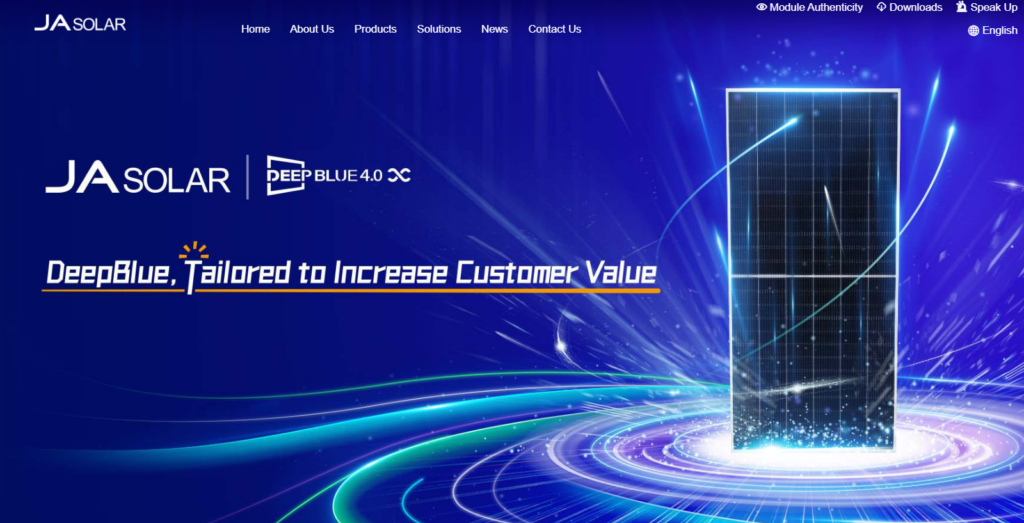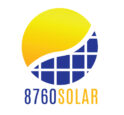
2023 was a big year for solar. The issues faced during the pandemic have been left in the wake and solar energy is now looking forward to a rosy future.
There have been some massive developments in solar technology. Some have the potential to completely change the industry and make solar easier and more affordable than ever. Other solar trends see innovative ways of combining solar panels with other land uses and making solar more accessible for all.
We’ve taken a deep dive into all of it to bring you a comprehensive overview of what to expect from solar energy in the near future. So without further ado, here’s our roundup of solar performance in 2023 and what to expect in 2024 and beyond.
In a Nutshell
- 2023 was a record year for solar growth in the USA, with an additional 6.5 GW worth of solar power installed.
- In 2023, solar energy accounted for 48% of all new electricity-generating capacity introduced into the grid.
- An estimated 14 GW worth of community solar projects is expected to be installed by 2028.
- Solar battery storage is expected to soar, with billions being invested in the development of longer-lasting storage solutions.
- Domestic solar manufacturing is expected to soar, addressing component shortages and wait times and increasing solar job opportunities.
- Floatovoltaics and agrivoltaics are set to increase exponentially, with over 400 identified agrivoltaics projects in development or operation.
- Perovskite solar cells are poised to completely revolutionize solar power.
- AI-powered solar systems will make solar energy more efficient and improve its longevity.
- Building integrated photovoltaics BIPV) will become commonplace in new constructions.
2023 US Solar Market Growth Highlights

It has been a great year for solar in the USA, largely due to the generous tax incentives and credits available for homes and businesses that install solar. Here are some of the highlights of the Solar Market Insight Report Q4 2023:
- In Q3, the US had added another 6.5 gigawatts of solar-generated electricity – enough to power almost 5 million homes. This amounted to a 35% year-on-year increase and a record growth quarter for the solar industry.
- California, Florida, Texas, Colorado, and Nevada were the top five states for solar installations for Q1 – Q3 2023.
- Solar is overtaking other methods of producing electricity, too. Throughout the first nine months of 2023, it accounted for 48% of all new electricity-generating capacity introduced into the grid.
- Global supply and demand and easing supply constraints have resulted in a reduction in the cost of solar modules. Those who purchase solar now can benefit from 10 – 15% cheaper equipment compared with 2022.
- Compared with Q3 2022, residential solar enjoyed a 12% growth in 2023, community solar saw a 14% increase, and commercial solar decreased by 3%.
- Utility-scale solar saw a massive jump in growth. The sector grew by 58% thanks to supply chain easements.
- According to Wood Mackenzie, 2023 was expected to be the USA’s largest year of solar installations to date, with an overall growth rate of 55% compared with the previous year.
Growth predictions over the next five years remain strong, with 14% increases expected annually. However, interconnection bottlenecks and transmission capacity issues threaten to stifle growth somewhat.
Regardless of these potential problems, the future for US solar looks extremely bright, and with some exciting innovations in the wings, we may just see these growth predictions blown out of the water.
US Solar Trends for 2024
Solar is definitely on the increase, but what type of solar is trending? More often than not, the focus is on residential solar installations, but we can expect other types of installations to grow in popularity.
Community Solar Initiatives

To date, solar has definitely been reserved for those who A) can afford it, and B) own real estate. However, there has been an increase in community solar projects that make the benefits of solar available to all – notably those who rent property or are of a lower income bracket.
Community solar – sometimes called a “solar garden” – allows individuals and businesses to enjoy solar-generated electricity without the upfront investment or the need to install their own solar panels. It is typically offered on a subscription basis and generally results in energy bills that are around 20% cheaper with no complicated contracts and zero additional fees.
In addition to providing access to those who cannot afford to invest in solar, it also makes it accessible to those who live in properties that don’t have suitable or sufficient ground or roof space to install photovoltaic panels.
To date, 22 states have passed favorable legislation to encourage community solar growth and uptake. These states are:
- California
- Colorado
- Connecticut
- Delaware
- Hawaii
- Illinois
- Massachusetts
- Maryland
- Maine
- Minnesota
- North Carolina
- New Hampshire
- New Jersey
- New Mexico
- Nevada
- New York
- Oregon
- Rhode Island
- South Carolina
- Virginia
- Vermont
- Washington
- District of Columbia.
The predicted growth of community solar is healthy. An estimated 14 GW capacity will be installed by 2028, which is an annual increase of around 8% year-on-year.
To further encourage growth, the U.S. Energy Department has set a target to power 5 million homes using community solar projects by 2025. If this target is reached, it will increase community solar’s current capacity to power 600,000 homes by a huge 700% in just four short years.
Solar Storage Will Continue to Increase

Solar storage is starting to become a necessity rather than an optional addition. The increase in solar energy is placing enormous pressure on the already strained grid infrastructure and people’s desire to achieve energy independence remains strong.
But to keep up with the soaring demand for solar storage, batteries need to improve their technology. The popular lithium-ion batteries can manage around four to eight hours worth of storage and, in most cases, several are required to achieve the desired amount of storage.
Additionally, lithium-ion only has a maximum lifespan of about 15 years, meaning they must be replaced at least once during a solar system’s lifespan.
The good news is that several promising technologies are likely to overhaul the current limitations of solar storage. This is what you need to keep your eye on:
- Zinc-based batteries: Emerging zinc battery technology brings lifespans of 20-plus years and low degradation rates. It’s also temperature resistant (no need for cooling or heating).
- The Department for Energy recently awarded Eos Energy a $400 million loan to develop zinc battery technology.
- Iron-air batteries: These take up little space but can provide up to 100 hours of duration. This makes them a great solution for grid and utility-scale solar storage and makes balancing electricity supply and demand easier to manage.
- Hydrogen batteries: This technology allows energy to be stored for months at a time, which provides better solutions for long-term energy resilience and planning.
- The Department for Energy has selected seven hydrogen hubs to receive $7 billion in funding to develop hydrogen power technology.
Domestic Solar Manufacturing

Currently, China is responsible for around 75% of the global solar manufacturing and supply chain. However, the US is keen to move away from the reliance on Chinese imports and start producing solar components and parts on home soil.
Much of this is due to the severe delays and cost increases associated with certain components. For example, transformers have had wait times of up to 39 months, and microchips can take as long as a year to arrive.
To address these problems, the US government is making moves to improve the situation.
In August 2023, the CHIPS Act was signed into law and provides $52 billion for the research and development of manufacturing semiconductor chips within the US. Additionally, $24 billion in tax credits has been made available to chip manufacturers who base themselves in the United States.
Additionally, the Inflation Reduction Act has made it much easier for solar manufacturers to start operations in the USA. As a result, a number of big players have announced their plans to start domestic solar module production. These include:
Many existing US-based solar manufacturers have also announced plans to expand or ramp up their operations over the coming years.
Finally, the introduction of the 10% domestic content tax credit bonus will encourage people to actively seek out domestically produced solar components and equipment.
The expansion of solar manufacturing in the US will not only boost solar take-up, but it’ll make it faster and easier too.
The extra bonus will be great for the solar job industry. With so many new manufacturing plants and the expansion of existing ones, we can expect to see many new employment opportunities cropping up. So, if you’re looking for a new career – the solar industry is an excellent choice!
Floatovoltaics Uptake

Floating solar arrays are starting to grow in popularity because they help address some key issues found in reservoirs and other water supplies.
Water is becoming increasingly scarce. Our heating planet is accelerating the problem by increasing water evaporation from our drinkable sources and encouraging algae to bloom and take over.
Algae is a particular challenge because it depletes oxygen supplies in the water and kills off marine life. Additionally, algae can be toxic to both humans and animals. If it proliferates, it can render entire reservoirs unsuitable for human consumption.
Floatovoltaics – the act of laying solar panels across bodies of water – helps prevent water evaporation and it also makes it a lot more difficult for algae to thrive.
In one example, the Canoe Brook Water Treatment plant in New Jersey has joined forces with NJR Clean Energy Ventures to create the USA’s largest floatovoltaics project.
An incredible 16,510 solar panels sit across 17 acres worth of water. In addition to providing enough power to meet 95% of the water plant’s energy requirements, the solar panels keep the water healthier and more plentiful. Their placement also removes the requirement to find enough suitable land space to accommodate them.
According to Nature Journal, adding solar panels to around one-quarter of the 24,000 reservoirs located in the United States would result in generating around 10% of the USA’s electricity. That’s a significant amount, and as land space becomes scarcer and climate change more prevalent, we can expect the number of floatovoltaics projects to grow in the coming years.
An Agrivoltaics Future?

One of the bigger problems presented in solar expansion is the amount of land space it requires. Particularly in larger-scale or utility farms that consist of acres of solar panels.
In many cases, farmland is sacrificed to make way for solar projects, but this no longer has to be the case. The growing interest in agrivoltaics is taking hold and new projects that combine farming and solar panels on the same piece of land are starting to pop up in all corners of the USA.
This solves the problem of deciding whether land should be used for farming or solar energy and the panels have the added benefit of providing a better microclimate and essential shade in which sensitive crops can thrive.
We can expect many new projects to crop up in the coming years. At the time of writing this article (January 2024), the National Renewable Energy Laboratory had identified 483 agrivoltaics projects in development or already in operation. As an indication of how much this has increased, the figure stood at 314 projects in March 2023.
For example:
- Guzman Energy has an 80 MW solar facility planned for Colorado that’ll also provide grazing pasture for over 1,000 sheep.
- In 2024, Next2Sun and iSun will start construction on the first vertical agrivoltaics farm in the USA. Based in Vermont, the farm will grow vegetables such as beets and carrots among 69 vertical rack elements containing bifacial solar modules.
- Colorado-based Summit Plant Labs grows microgreens and specialty crops. Sandbox Solar installed vertically mounted solar panels to provide shade and essential protection to the crops.
- The Somerset Gourmet Farm in California has placed vertically mounted Sunzuan panels among grapevines to provide protection, shade, and 23 kW worth of power.
Agrivoltaics has successfully been used for many years in Europe and parts of Asia and we’re very pleased this innovative practice is now being explored and adopted in the USA.
Photovoltaic Innovations to Watch in 2024
It’s getting harder and harder to keep up with all the exciting technological advancements and innovations that are taking place, and the solar sphere is no exception.
Some extremely fascinating things are happening that are poised to completely overthrow the solar industry as we know it (in a positive way, of course!).
Perovskite Solar Cells

Move over silicon, a new photovoltaic material is in town, and it’s good. Really good.
Cheap, abundant, and less complicated to source or manufacture, perovskite is the material that is poised to take over the solar industry.
Perovskites are a class of minerals with specific crystal structures that contain calcium titanate. They are widely found in a number of rock forms and within the Earth’s mantle.
However, the perovskites found in solar cells are not extracted from natural sources, as they are synthetically manufactured for their specific purpose, which is very cheap and easy to do.
The real winner for this new photovoltaic material is its efficiency rate, which blows traditional crystalline solar panels right out of the water. In 2021, UK-based solar manufacturer Oxford PV achieved an efficiency rate of 29.52% using perovskite cells. In contrast, traditional silicone cells max out at around 26% efficiency.
And that’s not all. Tandem cell technology, a combination of perovskite and silicone, is currently being explored, which has the potential to reach efficiencies of 40% upwards.

Perovskite is also extremely cheap to produce. It costs around $0.16 per watt, compared with $0.40 to $0.69 per watt for other thin-film photovoltaics. The cost of producing perovskite panels is predicted to fall even further to around $0.10.
The major downside of a perovskite solar cell is its extremely short lifespan and its sensitivity to moisture, harsh temperatures, saltwater, and other elements. Right now, they can only last around 30 months before being rendered ineffective. Silicone solar panels, on the other hand, can last beyond 30 years.
The next couple of years will be extremely interesting for this new technology. Manufacturers are pouring efforts into research and development to make perovskite cells longer-lasting and more resilient to external factors.
When perovskite becomes commercially available, it will revolutionize the solar market and make abundant solar power cheap and accessible for all.
AI Solar Systems

2023 was the year of AI (artificial intelligence). With the birth of ChatGPT in late 2022 and a seemingly never-ending avalanche of AI-powered tools and software since then, sometimes it feels like AI is about to take over the world.
Whether or not that’s really the case, you can’t argue that AI can be instrumental in improving systems. For example, where agriculture is concerned, AI can now analyze the composition of soil to determine precisely which nutrients it’s lacking.
AI can even predict which diseases or pest issues are likely to occur, and it can use algorithms to determine the optimal watering and feeding routine for crops.
For solar power, AI can be equally as beneficial. Here are some of the ways it can help:
- AI is currently used for power system performance and identifying any maintenance issues. Solar monitoring systems give you real-time information on how well they are performing and will also identify patterns that may affect future performance. This technology is also used for maintenance and catching issues early, which reduces equipment malfunctions and prevents further damage.
- The technology is being used to analyze potential sites for solar systems. Its capacity to handle large amounts of data simultaneously means it can identify the best places to install solar panels, so they can reach the highest possible efficiencies.
- AI is also used to create 4D designs and construction plans tailored precisely for the type of solar equipment, site conditions, and restrictions. Different scenarios can be tested on these models to optimize equipment, maximize output, and avoid any potential problems.
- Thanks to AI’s ability to maximize and optimize, the construction costs of large and complex solar projects can be reduced by as much as 30%. AI systems also play a huge part in reducing construction delays, which helps manage costs.
- For grid-connected solar systems, AI can play a critical role in helping manage the inflow of solar-generated electricity to the grid. As more people go solar, managing the massive influx of electricity into an aging grid system will be essential. AI can be used to forecast power demand, improve production uptime, and expand energy systems and storage capacity.
- Accurate forecasting using AI will give solar owners the ability to prepare and make real-time adjustments to cope with current conditions. This reduces power wastage, improves solar energy storage, and ensures greater resilience during extreme weather events and grid-based power outages.
Moving into 2024, we will see the use of AI in solar energy increase. As AI technology improves and becomes cheaper and easier to use, AI will become an everyday tool used by developers and an integral part of the solar system itself.
After all, the goal of a solar panel is to be as efficient as possible, and if AI can achieve better efficiencies, then it will play a pivotal role in helping us reach a more sustainable and green energy future faster.
Building Integrated Photovoltaics (BIPV)

BIPV isn’t a new thing and has actually been around for a while, but it’s only now starting to gain ground in popularity. This is largely due to improvements in technology and the expansion of available applications.
According to the Building-integrated Photovoltaics Market Size, Share & Trends Analysis Report, in 2022, the US BIPV market was valued at $19.82 billion and this is expected to rise year on year. In fact, a growth rate of 21% is expected between 2023 – 2030.
BIPV is the practice of combining photovoltaics into building materials. The biggest example of this is probably clear solar panels that act and look like glass while capturing sunlight and transforming it into electricity.
This has paved the way for solar greenhouses to become a reality, and they are also used for canopies, facades, skylights, and more.

In another example, we see a massive uptick in the use of solar shingles. These are a type of roof shingle or tile that replaces a traditional shingle. So, rather than laying solar panels on top of an existing roof, the solar shingles become the roof.
This is more aesthetically pleasing (they really do look great!) and allows more surface area to be used for capturing solar energy.
Other types of BIPVs include solar cladding and flexible laminates that can adhere and mold to most surfaces.
Since the BIPV market looks set to keep growing, we can only expect to see more innovative examples of combining solar with building materials. It may even be possible to one day have your entire home or business premises capable of capturing and harnessing the sun’s energy!
Ready for a Solar Future? Talk to 8760 Solar

If you are a rural business or farm based in Colorado and surrounding states. then we would love to hear from you.
At 8760 Solar, we have a long-standing relationship with Colorado’s agricultural businesses and we have established ourselves as a trusted and reliable supplier and installer of solar energy systems.
If you are interested in how solar energy can benefit your business, the 8760 Solar team will provide you with a full analysis of your farm to help you understand the best type of solar system for your needs.
We’ll also provide you with a no-obligation quote and help you understand how to take advantage of all the available incentives and tax credits (and show you how quickly you can gain a full return on investment).
To get started, text “READY” to 719 470-0254 or contact us via email: sales@8760solar.com. We’re looking forward to hearing from you.
Frequently Asked Questions
What Is the New Solar Panel Technology in 2024?
There is no specifically new solar panel technology for 2024, but we shall continue to see advancements in perovskite solar cell development, an increase in the use of AI in solar systems, and an increase in the use of building-integrated photovoltaics.
Will Solar Panels Get Cheaper in 2024?
According to the Solar Market Insight Report Q4 2023, solar panels have reduced in cost by around 10% – 15% compared with 2022. Market analysis predicts that the cost of solar can fall to $0.18 per watt in 2024. This is a 2-cent drop from $0.20 per watt in 2023.
What Is the Trend for Solar Energy in the US?
Solar trends in the US include an increased demand for community solar projects, solar storage solutions, and an uptake in domestic manufacturing for solar equipment and components. We’ll also see agrivoltaics and floatovoltaics more frequently explored in the agricultural industries.
How Fast Is Solar Growing in the US?
Solar is expected to grow by 14% annually over the next five years. Solar grew massively in 2023, with 48% of all new electricity capacity added to the grid coming from solar-generated sources.
What Are the US Solar Targets for 2030?
The USA aims to achieve 739 GW of wind and solar by 2030 and to reach zero-carbon electricity by 2035. To reach this target, it needs to increase solar energy output by 35 GW year-on-year.
Should I Buy Solar in 2024?
Yes! Right now, there are some great US incentives for going solar. Rural businesses can get a REAP grant covering up to 50% of the installation cost, and there is a federal 30% ITC tax credit. Many states also have additional incentives available. Depending on successive US government agendas, these incentives could change or be removed, therefore, going solar has never been cheaper than it is now.
